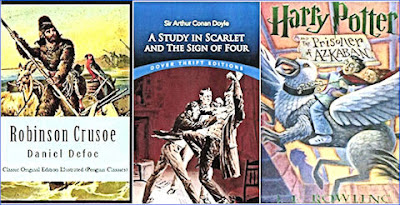Fiction writers who want
to keep their readers immersed in the story must pay attention to continuity.
That means that plot and description must be consistent so that errors don’t
interrupt the story. To give the most commonly used example, a heroine with
green eyes in chapter one shouldn’t suddenly have brown eyes in chapter five.
If readers notice that, they may not read on to chapter six.
My biggest continuity
errors result from changes that occur as I write the story. In Desert Jewels,
my protagonist’s name started as Martha and changed to Emi. That sounds simple
enough to handle: just use Word’s search and replace function. That was fine
when I first made the change. Unfortunately, as I wrote more, I was so used to the
old name that it kept creeping into the new material. In the end I did another
search on Martha and replaced it with Emi. But if I hadn’t, readers would have
been bumped out of the story every time they came across the original name.
Then there are my
protagonist’s dresses in Welcome to America. Anne starts the voyage with
three dresses, and two of them get stained during the crossing. When Anne
arrives at Ellis Island, she is wearing a wool dress that is too hot for the
summer temperatures. After I realized that the wool dress was one of the
stained ones, I had to go back and rework what she wore when.
In my murder mystery, I
rearranged several large chunks of material between the second and third
drafts. So it was necessary to catch and eliminate earlier references to events
that now occurred later in the story.
Fortunately, I have
back-up. If I don’t catch the continuity errors, my critique partner or copy
editor will. That’s what happened in the manuscript I just completed, where my
copy editor noticed that I had mentioned the Odyssey when I meant the Iliad.
As far as I know, I’ve
managed to catch and fix continuity errors before they get embedded in a novel
and pull my readers out of the story. Still, if someone does find continuity
errors, I wouldn’t be alone. Here are two examples from classic novels:
- In Robinson
Crusoe by Daniel Defoe, Crusoe strips naked to swim to the wrecked
ship and retrieve supplies. Yet he somehow manages to have pockets to shove
some of those supplies into.
- In Sir
Arthur Conan Doyle’s Sherlock Holmes series, Dr. Watson’s war wound moves
from his shoulder in A Study in Scarlet to his leg in The Sign
of Four.
And another from a more recent
book:
- In Harry
Potter and the Prisoner of Azkaban by J.K. Rowling, Harry and Hermione
leave Buckbeak tied to a tree, but when they return he is tied to a fence.
If you do find continuity
errors in my books, at least I’ll be in good company.
But I’d rather it didn’t
happen at all.










No comments:
Post a Comment